10 Most Sustainable Wool Clothing Brands: The Conscious Consumer’s Guide
Affiliate Disclosure
Hey fellow impactful ninja ?
You may have noticed that Impactful Ninja is all about providing helpful information to make a positive impact on the world and society. And that we love to link back to where we found all the information for each of our posts.
Most of these links are informational-based for you to check out their primary sources with one click.
But some of these links are so-called "affiliate links" to products that we recommend.
Why do we add these product links?
First and foremost, because we believe that they add value to you. For example, when we wrote a post about the environmental impact of long showers, we came across an EPA recommendation to use WaterSense showerheads. So we linked to where you can find them. Or, for many of our posts, we also link to our favorite books on that topic so that you can get a much more holistic overview than one single blog post could provide.
And when there is an affiliate program for these products, we sign up for it. For example, as Amazon Associates, we earn from qualifying purchases.
What do these affiliate links mean for you?
First, and most importantly, we still only recommend products that we believe add value for you.
When you buy something through one of our affiliate links, we may earn a small commission - but at no additional costs to you.
And when you buy something through a link that is not an affiliate link, we won’t receive any commission but we’ll still be happy to have helped you.
What do these affiliate links mean for us?
When we find products that we believe add value to you and the seller has an affiliate program, we sign up for it.
When you buy something through one of our affiliate links, we may earn a small commission (at no extra costs to you).
And at this point in time, all money is reinvested in sharing the most helpful content with you. This includes all operating costs for running this site and the content creation itself.
What does this mean for me personally?
You may have noticed by the way Impactful Ninja is operated that money is not the driving factor behind it. It is a passion project of mine and I love to share helpful information with you to make a positive impact on the world and society. However, it's a project in that I invest a lot of time and also quite some money.
Eventually, my dream is to one day turn this passion project into my full-time job and provide even more helpful information. But that's still a long time to go.
Stay impactful,
Wool is a wonderful natural material, but not without its impact, especially from the farming stage. Thus, recycled wool is becoming quite the preferred material because it bypasses resource-draining and ethic-challenging wool cultivation. Unfortunately, fashion greenwashing makes it harder for you and all other consumers to determine which brands offer the most eco-friendly wool garments. So, we had to ask: Which are the most sustainable wool clothing brands?
The most sustainable wool clothing brands are Patagonia, Eileen Fisher, and ARMEDANGELS, which cut down the carbon footprint, employ full traceability, and strive for circularity. In addition, Ecoalf and VAUDE use low-impact, high-quality materials and adhere to ethical practices.
Whether you are searching for a sweater, a pair of socks, or some sportswear to add to your wardrobe without negatively impacting the soil, the water, the animals, and other people, there is a brand for you. So, let’s keep reading to learn more about the most sustainable wool clothing brands and how they ensure sustainable, ethical practices.
Here’s How Sustainable Wool Fabrics Generally Are
Wool fabrics are made with animal hair, a natural material that readily biodegrades at the end of its life. During the usage phase, wool clothing and household items can be washed sparsely, saving water and energy. As an animal-derived product, wool fabrics share the impact that farming has on the land and the animals themselves. Such an impact can be reduced by sourcing responsible, regenerative, and organic wool. It’s also important to note that recycled wool is ranked Class A—the most sustainable category of fibers by The Common Objective’s Made-By Environmental Benchmark for Fibres.
“Sustainable: The ability to be maintained at a certain rate or level | Avoidance of the depletion of natural resources in order to maintain an ecological balance”
Oxford Dictionary
To understand the sustainability of wool, we’ve assessed the life-cycle and each stage’s sustainability. This life-cycle assessment (LCA) is a method to evaluate the environmental impacts of products and materials. Here’s the quick summary of our LCA of wool!
What makes wool so sustainable: Recycled wool is considered the most sustainable wool variety because using discarded wool materials to make recycled wool fabrics reduces pressure on land, water, and other resources needed for rearing more wool-producing animals.
Additionally: Diverting discarded woolen fabrics back into the economy slows down the demand for land needed for waste storage.
Here’s How We Selected the Most Sustainable Wool Clothing Brands
The brands on this list were chosen based on their commitment and actions to promote sustainable practices while reducing the environmental impacts of the textile industry.
They are transparent about their materials, processes, and workforce management within their supply chain.
Some brands focus their efforts on reducing waste and optimizing natural resources while others strive to reduce the carbon footprint of their clothes.
All of these brands share the commitment to reshape the textile industry toward a more sustainable and Earth-friendly sector.
These Are the 10 Most Sustainable Wool Clothing Brands
Most Sustainable Wool Clothing Brands
Overall, these wool clothing brands are sustainable. Yet, they take various approaches to reduce environmental impacts and uphold ethical standards. Let’s dive into each brand and find out more.
Patagonia: Everyday Wear for Those Who Care
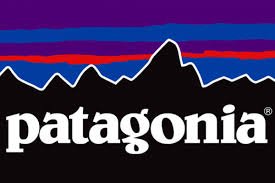
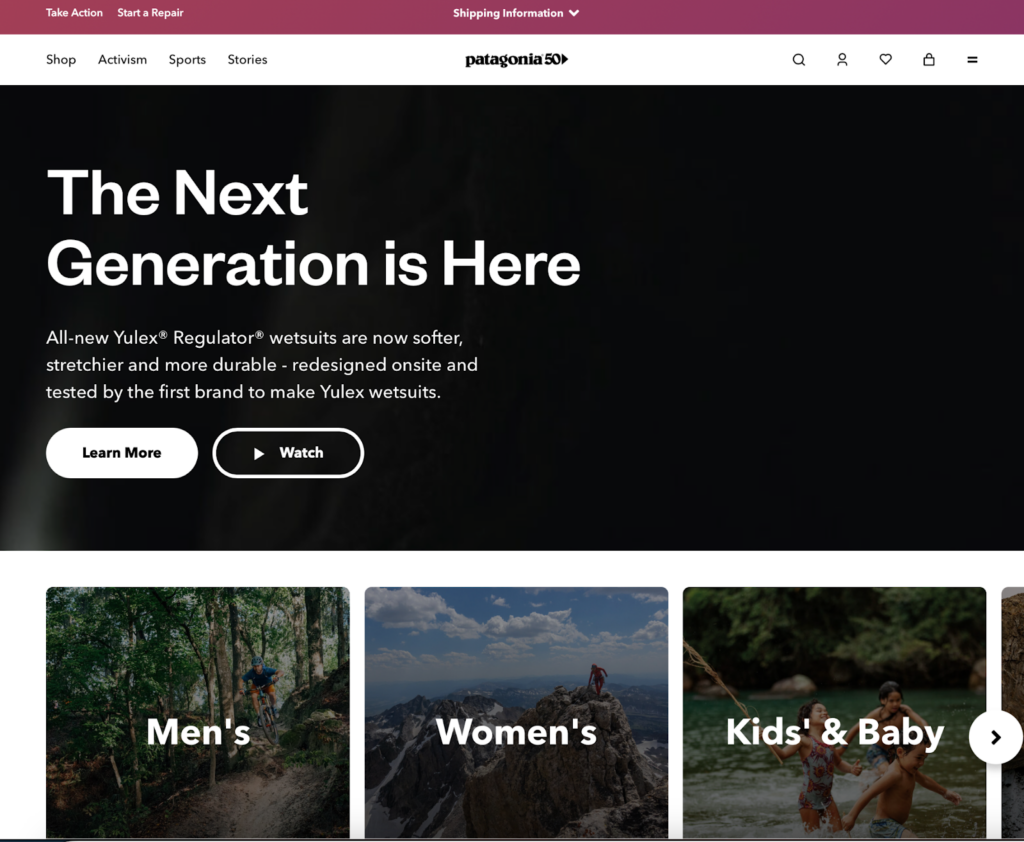
“Together, we can prioritize purpose over profit and protect this wondrous planet, our only home.”
Patagonia
🌎
How do they ensure their sustainability?
Patagonia puts sustainability at the center of their operation. They work to reduce, rather than simply offset, carbon emissions where it matters the most: in the supply chain and material manufacturing. They reduce their carbon footprint by removing high-impact virgin fossil-based fibers from their collections, using “Environmental Profit and Loss” to guide their production decision, and helping their suppliers to cut emissions. Patagonia’s fall 2023 collection is made up mostly of preferred materials (91% by fabric weight), including recycled cotton, hemp, man-made cellulose fibers, and Regenerative Organic Certified fibers. On top of that, Patagonia’s Worn Wear program encourages customers to repair and recycle their products, extending the textile lifecycle and reducing waste. Lastly, Patagonia is certified as a B Corporation and a Bluesign® brand.
🌐
How do they ensure their ethics?
Patagonia commits to fair trade practices. Through the partnership with Fair Trade USA, they currently produce 86% of their clothes in 20 Fair Trade Certified factories. Patagonia pays a premium for every item produced in such factories, accumulating in a fund for workers to use in their chosen community projects, whether in healthcare or parent support or to withdraw as a cash bonus. Additionally, they have various social responsibility programs to prevent harm and create positive impacts on the lives of apparel workers in their supply chain. These include the Fair Labor Association, the Living Wage Program, the Migrant Workers Program, and the Responsible Purchasing Practices. Patagonia is also fully transparent about the locations of their facilities and suppliers. Regarding the sheep from whom they source their wool, Patagonia has developed the Patagonia Wool Standard, which uses the Responsible Wool Standard as a foundation but goes beyond it in several key areas of animal welfare practices.
🤝
Are they part of any giving-back programs?
Since 1985, Patagonia has pledged 1% of sales annually to environmental causes. They have awarded over $89 million in cash and in-kind donations to domestic and international grassroots environmental groups, making a difference in their local communities. In 2022, the founder of Patagonia gave away his family’s ownership of the company to the newly created Patagonia Purpose Trust and the not-for-profit organization Holdfast Collective, ensuring that all future profits from the company are used to fight the climate and extinction crisis.
🛍️
What is their product range?
- Best for: kidswear, menswear, womenswear
- Product range: shirts, pants, jackets, blazers, hoodies, sweatshirts, T-shirts, shorts, plus-size
- Price range: $$$
- Size range: XXS–XXXL
Eileen Fisher: A Sustainable Fashion Brand Focusing on Eco-Friendly Materials and Textile Circularity
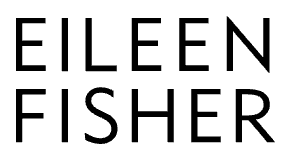
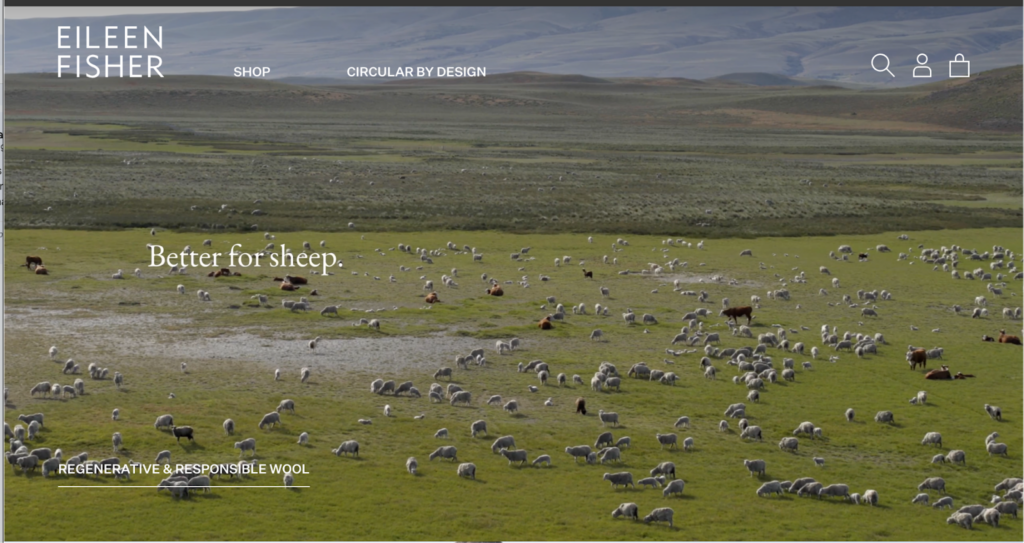
“The Biggest Thing We Can Do Is Reduce”
Eileen Fisher, founder of Eileen Fisher
🌎
How do they ensure their sustainability?
Eileen Fisher’s sustainability efforts focus on using eco-friendly materials, including recycled cotton, organic cotton, linen, and hemp, reducing greenhouse gas emissions generated from their operations and supply chain, reducing fabric and corporate waste, and recycling the brand’s used clothes back into new products. Their commitments to sustainable materials, circular systems, and environmentally friendly practices are demonstrated in initiatives like VISION 2020, Horizon 2030, and Renew. They are also certified as a B Corporation and a Bluesign® brand.
🌐
How do they ensure their ethics?
Eileen Fisher is committed to ethical practices. They have worker empowerment initiatives such as collective bargaining and the right to make a complaint. For example, their “Our Love, Peru” project supports over 450 families in and around Arequipa with higher fair trade wages and investments in the local community. Additionally, Their VISION 2020, set in 2015, tackled unethical labor practices. It has a formal animal welfare policy aligned with Five Freedoms. Additionally, Eileen Fishers uses sheep wool certified by the Responsible Wool Standard, appropriately addressing sheep’s welfare and the land they graze on.
🤝
Are they part of any giving-back programs?
Eileen Fisher supports many women-owned businesses. The brand has provided, since its inception, many grants for women, including the current program Supporting Women in Environmental Justice.
🛍️
What is their product range?
- Best for: elegant, classic, and casual women’s clothes
- Product range: dresses, blouses, sweaters, cardigans, pants, skirts and outerwear, shoes, accessories
- Price range: $$$
- Size range: XXS–3XL
ARMEDANGELS: Sustainable Clothing Brand Plus an Agent of Lifestyle Change


“So starting out with the humble tee, we took our oath against wage slavery, chemical shortcuts, and mass-producing pure crap, and transformed ourselves into one of the first clothing brands in all the land to put people and planet first.”
ARMEDANGELS
🌎
How do they ensure their sustainability?
ARMEDANGELS ensures sustainability by reducing carbon footprints while enabling people to change lifestyles to fight climate change. The brand innovates to cut down carbon emissions in their supply chain, starting with sourcing a high proportion of eco-friendly materials. Specifically, they use GOTS-certified organic cotton fabrics, wood-based fabrics, circular yarns made with discarded textile materials they collect, and organic wool fabrics that meet both the Global Organic Textile Standard (GOTS) and the Responsible Wool Standard (RWS). Additionally, ARMEDANGELS chooses materials with the lowest carbon footprint possible, for example, opting for lyocell over silk, or natural fabrics over fossil-based synthetic fabrics, while increasing recycled content, such as recycled wool and recycled cotton. In other life-cycle stages, they lower the impact by eradicating unnecessary chemicals, bleaching without toxic chlorine, and using renewable energy. Their efforts to encourage lifestyle change include care and repair guides to keep garments longer in circulation. They also have a resale platform that facilitates traded-in to be sold again as second-hand clothes or recycled as fibers for new clothes.
🌐
How do they ensure their ethics?
ARMEDANGELS ensures their ethics by only working with trusted partners to deliver decent wages and workers’ safety. They directly and actively monitor all their suppliers and the suppliers’ nominated subcontractors via on-site and online Internal Due Diligence Check and Self-Assessment, external audits by Fair Wear Foundation (FWF), Global Organic Textile Standard and third-party audits, continuous support, and tailored training programs by third parties. ARMEDANGELS ensures payment of a living wage in part of its supply chain and pays a markup where they notice wage issues via the living wage project. Most importantly, they are fully transparent about the journey from raw material to their products, especially where people and animals are involved, and the impacts of their actions.
🤝
Are they part of any giving-back programs?
ARMEDANGELS raises funds by donating part of their sales to support various organizations and campaigns. For example, during the COVID-19 pandemic, they have raised €745.800 ($790,883.61 USD) for Doctors Without Borders, facilitating isolation wards, COVID-19 clinics, and protective clothing for medical professionals worldwide. Other fundraising projects include supporting the climate movement with German Zero and the Climate Emergency Fund, fighting for equality with UN Women, advocating for fair payment and safe working conditions for Bangladeshi garment workers with the National Garment Workers Federation, and rescuing refugees in the Mediterranean Sea with Sea-Watch.
🛍️
What is their product range?
- Best for: kidswear, menswear
- Product range: jeans, jackets, jumpsuits, shorts, skirts, T-shirts
- Price range: $$
- Size range: XS–XXL
Ecoalf: Committing to Recycling Waste and Cleaning the Environment

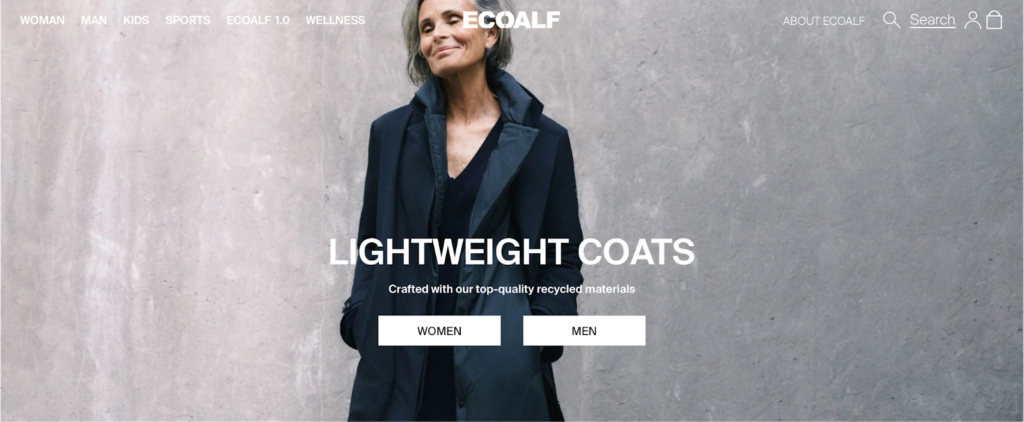
“I believe the time when fashion was just about looking good is over. More than ever it has to be about doing what is right and feeling good about it.”
Javier Goyeneche, founder of Ecoalf
🌎
How do they ensure their sustainability?
Ecoalf’s commitment to sustainability is evident in their innovative recycling practices. They minimize the use of natural resources by using mainly waste as raw materials, collecting and transforming discarded materials such as plastic bottles, discarded fishing nets, and post-industrial cotton into high-quality fashion items. In 2023, they launched their first 100% recycled cotton collection that can be recycled again to achieve circularity. In 2021, 74% of the materials used by Ecoalf were recovered from waste, saving 1,377 tons of CO₂. In combination with recycled fabrics, including mechanically recycled cotton, recycled wool, recycled polyester, and recycled nylon, Ecoalf uses a small percentage of low-impact natural fabrics, such as linen and kapok. Ecoalf is also Bluesign® and B Corporation certified.
🌐
How do they ensure their ethics?
Ecoalf ensures their ethics by protecting their workers and the environment. In particular, they ensure there are safe and fair working conditions in their supply chain by mandating a Code of Conduct, an Equality Scheme, a Crime Prevention Handbook, a Disciplinary System, and a Bullying at Work Protocol. Additionally, they run many campaigns to raise awareness of the state of our ocean and earth-damaging consumerism habits.
🤝
Are they part of any giving-back programs?
Ecoalf actively participates in giving-back programs. The Ecoalf Foundation was founded to clean the oceans of marine waste with the help of the fishing industry while giving a second life to plastic waste through recycling and closing the loop. They achieve that with the “Upcycling the Oceans” projects. In 2021, Ecoalf donated 10% of all Because There Is No Planet B sales to the Ecoalf Foundation to expand the “Upcycling the Oceans” project beyond the Spanish border and into countries like Thailand, Greece, and France. The foundation also partners with Biotherm to set up the framework of “Limpia ríos, salva océanos,” a project supported by corporate volunteer days to collect waste and restore the environment. Additionally, Ecoalf’s employees volunteer in various environmental incentives.
🛍️
What is their product range?
- Best for: womenswear, menswear, kidswear
- Product range: shirts, pants, jackets, blazers, hoodies, sweatshirts, tops, blouses, knitwear, T-shirts, sneakers, accessories
- Price range: $$
- Size range: XS–XL
VAUDE: Outdoor Gear and Apparel Where Performance Meets Ecology

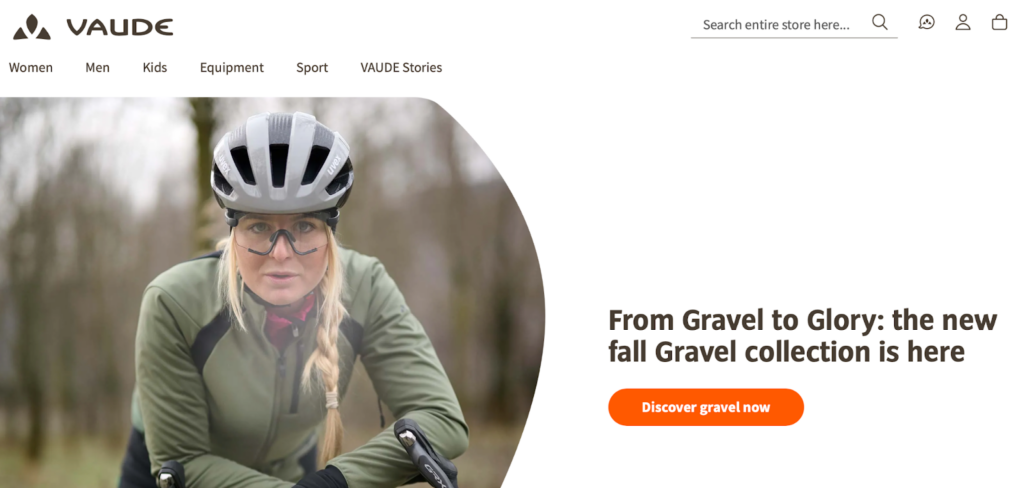
“We design with a focus on minimal material consumption, try to avoid waste and design products that are timeless, durable and repairable.”
VAUDE
🌎
How do they ensure their sustainability?
VAUDE prioritizes sustainability by creating a counterbalance to resource-consuming lifestyles. They achieve that by making durable and versatile products for life, minimizing waste during manufacturing, and enabling longer product lifespan with maintaining, repairing, donating, and upcycling guidance. VAUDE opts for materials that combine technical performance and ecological responsibility. For example, they use sheep wool, which makes a warm and water-repellent protective layer ideal for mountain sporting, while lowering the impact of this fabric by adhering to the Responsible Wool Standard and the Global Organic Textile Standard for virgin organic wool and increasing the content of GRS-certified recycled wool in their collection. VAUDE commits to having 50% recycled or biobased material content in 90% of their products by 2024. Furthermore, their products have been certified by Bluesign® and Green Button. Regarding their impact, the brand sets science-based climate goals to reduce global emissions as quickly as possible, aligning with the Paris Agreement’s 1.5 degrees in global warming, and is on track with their target as of October 2022, according to Science Based Targets (SBTi). They achieved that by measuring the total carbon footprint and implementing reduction measures in hotspots like material, energy, and transport. Since the beginning of 2022, VAUDE has been a carbon-neutral company, achieved through fully offsetting their global greenhouse gas emissions in the My Climate’s climate change mitigation project in Vietnam, their most important country of production.
🌐
How do they ensure their ethics?
VAUDE ensures ethical practices for both humans and animals involved in their operation. They work with the Fair Wear Foundation to monitor their final stage of production, ensuring safe working conditions and fair wages for factory workers. They also audit 100% of their producers in high-risk countries. Additionally, VAUDE has a basic policy to support diversity and inclusion in its direct operations and supply chain. Regarding animal rights, they follow the Responsible Wool Standard, appropriately addressing sheep’s welfare and the land they graze on.
🤝
Are they part of any giving-back programs?
VAUDE donates FairWertung the products that can’t be repaired but are still perfectly functional. In 2021, VAUDE donated products with a merchandise value of approximately €339,000 to the network, which makes clothes affordable via charity shops or second-hand stores.
🛍️
What is their product range?
- Best for: sportswear (cycling, hiking, skiing) and urban outdoor clothes for women, men, kids
- Product range: jackets, hoodies, sweaters, shirts, vests, pants, shorts, skirts, functional underwear
- Price range: $$$
- Size range: XS–XXXL
Arvin Goods: Sustainable Apparel Accessories With a Commitment to Transparency

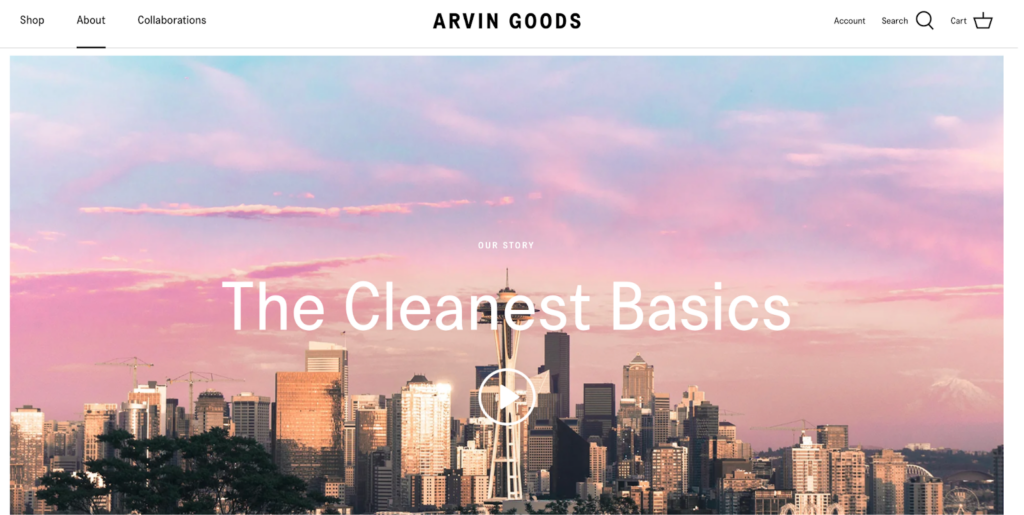
“We foster and lead impact reduction by making low-impact basics that never compromise on performance, comfort, quality — or ethics.”
Arvin Goods
🌎
How do they ensure their sustainability?
Arvin Goods ensures sustainability by focusing on recycling and upcycling materials to close the textile loop. They use recycled cotton, which they recover from textile scraps, to make comfortable and fitting socks. Other recycled fabrics used in Arvin Goods’ products are hemp biofiber (recycled hemp), recycled wool, recycled polyester, and recycled nylon. They are also certified by the Global Recycled Standard (GRS). Their “Take Back Bag” is a convenient solution for recycling and giving new purpose to used clothes. Additionally, their products are dyed according to the Plant Dye Standard, which increases energy efficiency. Arvin Goods produces some of their products in a factory that runs on 50% solar power. Finally, Arvin Goods uses responsible packaging, including a recycled and recyclable card wrap for socks and durable, recycled paper outer packaging from EcoEnclose EcoX Mailers.
🌐
How do they ensure their ethics?
Arvin Goods is transparent about their manufacturing locations and practices. They source their recycled cotton base yarn from a facility in Spain and manufacture the end products in one factory in Portugal and another in Canada. These locations have relatively high standards for labor safety. Arvin Goods is also GOTS and GRS certified, both of which ensure traceability in the supply chain.
🤝
Are they part of any giving-back programs?
Arvin Goods is not known to be part of any giving-back programs.
🛍️
What is their product range?
- Best for: womenswear, menswear
- Product range: socks, T-shirts, sweatshirts, hoodies, accessories
- Price range: $$
- Size range: S–XXL
ASKET: Timeless Clothes Made Under Full Transparency and With Life-Cycle Responsibility
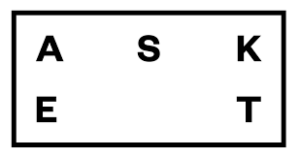

“Our mission is to end overconsumption and restore value to the clothing industry.”
Jakob Dworsky, founder of ASKET
🌎
How do they ensure their sustainability?
ASKET ensures sustainability by reducing waste and using less energy throughout the life-cycle of their garments. They tackle the textile waste problem with their Repair Program which helps keep clothes last longer and their Revival Program which diverts used garments from landfills to be repaired, renewed, resold, or recycled. On top of that, they use various recycled fabrics, including recycled wool, recycled cotton, recycled silk, recycled polyester, and recycled nylon. ASKET also runs a Care Program, helping consumers keep their garments fresh longer while using less energy, lowering the environmental impact of the usage stage. In an effort to encourage consumers to buy and waste less, they are fully transparent about the environmental impact of their clothes.
🌐
How do they ensure their ethics?
ASKET maintains ethics through fair labor practices, responsible sourcing, and a commitment to transparency in their supply chain. In 2022, their average traceability score across their entire collection was 96.0%. Regarding animal rights, they follow the Responsible Wool Standard, appropriately addressing sheep’s welfare and the land they graze on.
🤝
Are they part of any giving-back programs?
ASKET is not known to be part of any giving-back programs.
🛍️
What is their product range?
- Best for: high-quality, essential, versatile wardrobe pieces
- Product range: tops, sweaters, pants, chinos, jackets, coats, socks, underwear
- Price range: $$$
- Size range: XS–XXL
Organic Basics: A Carbon Neutral Brand Creating Underwear, Activewear, and Everyday Essentials

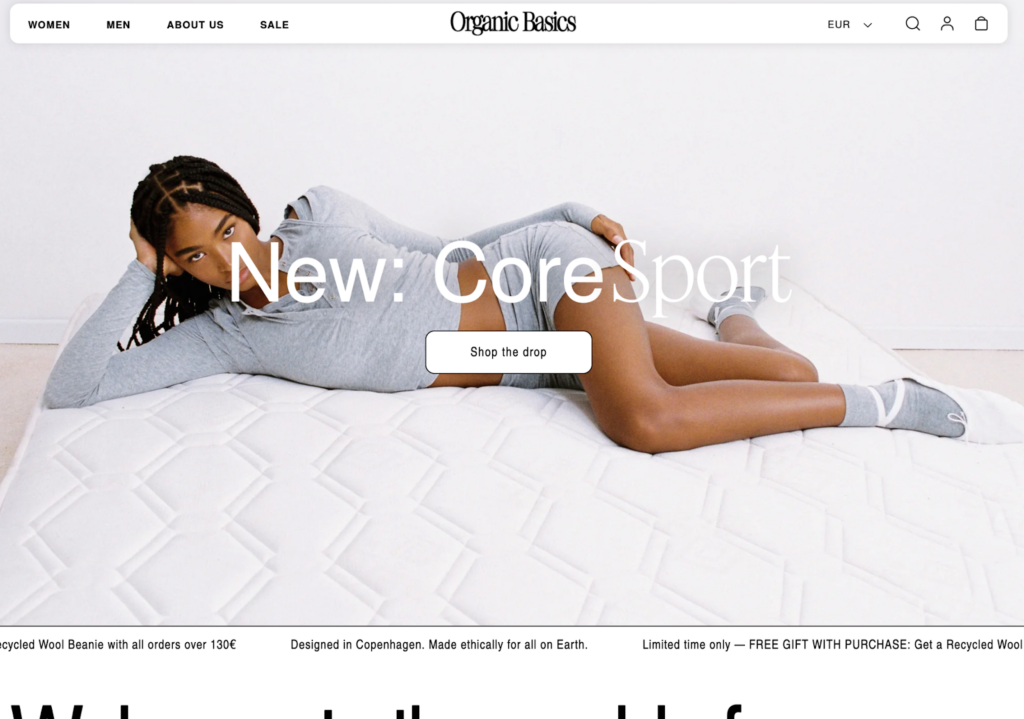
“We make our basics to be both Earth- and people-friendly — carefully choosing materials and fabrics that care for our environment, only partnering with factories that consider their impact too, and designing all the basics for all bodies.”
Organic Basics
🌎
How do they ensure their sustainability?
Organic Basics promotes sustainability by choosing fabrics based on their environmental footprint and lifetime durability. Their clothes are made exclusively with natural fabrics (organic cotton certified by the Global Organic Textile Standard), low-impact textiles (TENCEL™ lyocell certified by the STANDARD 100 by OEKO-TEX®), or recycled materials (recycled wool, recycled cotton, and recycled nylon). They use a small percentage of elastane in some garments to extend the products’ longevity, which ultimately extends the lifespan. Organic Basics is fully transparent about the impact of their products, enabling consumers to understand their share in using the clothes. Organic Basics partners with Made2Flow, which calculates their emissions, and One Carbon World, which helps them reduce and offset all their emissions. Finally, they are also a B Corporation.
🌐
How do they ensure their ethics?
Organic Basics works only with trusted, certified factory partners, who ensure that their workplace is free of child labor and forced labor and that their workers enjoy a safe working space, earn a living wage, and benefit from employee perks like free lunches and childcare. They show full transparency of the location and practices in their factories. Organic Basics also audits or visits most of their suppliers.
🤝
Are they part of any giving-back programs?
Organic Basics donates 1% of the value of all orders to sustainable projects. Their partnership with Beam Impact enables consumers to choose where their 1% donation will go, at no extra cost to the consumers, to support local charities that help Nature Conservation, Ocean Conservation, Rewilding, or Sustainability & Gender Equity.
🛍️
What is their product range?
- Best for: womenswear, menswear
- Product range: underwear, bras, bottoms, T-shirts, tops, sweatshirts, hoodies, knitwear dresses, swimwear, socks, plus-size
- Price range: $$$
- Size range: XXS–XXL
Swedish Stockings: Quality Stockings From Recycled Materials

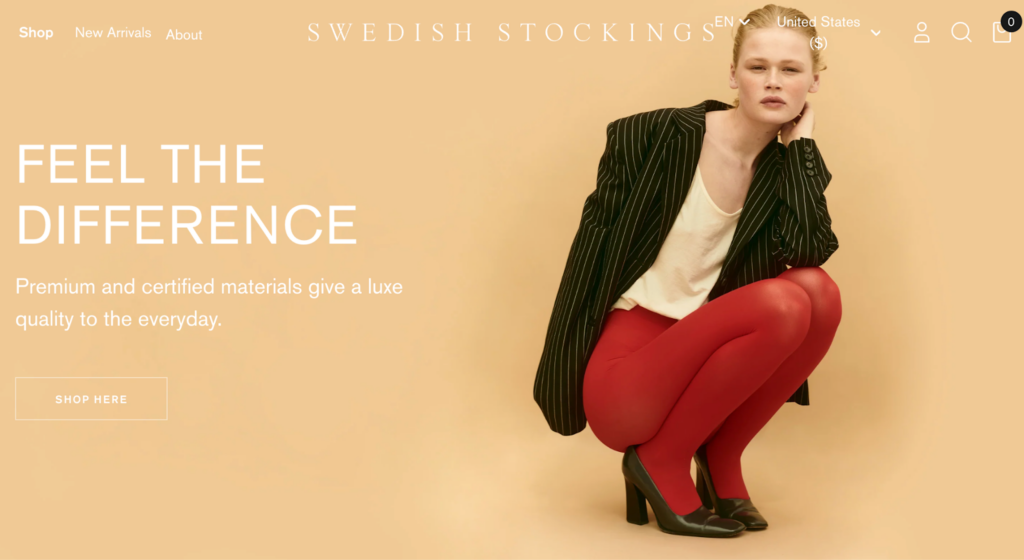
“If we can create a product that women can wear for a longer time, then we can also buy less.”
Linn Frisinger and Nadja Forsberg, Founders of Swedish Stockings
🌎
How do they ensure their sustainability?
Swedish Stockings promotes sustainability by opting for low-impact materials while minimizing waste by recycling its textile offcuts and collecting post-consumer synthetic stockings. Instead of sourcing conventional virgin fossil-based polyamide (nylon) for their tights, Swedish Stockings use high-quality recycled nylon, specifically Aquafil‘s ECONYL®, Fulgar‘s Q-NOVA® and Q-CYCLE®, and Nilit‘s SENSIL® Ecocare. They also use bio-based nylon and natural materials (GOTS-certified organic cotton, Responsible-Wool-Standard-certified organic wool, and cashmere). While they are not yet able to close their production loop by recycling old hosiery into new products themselves, Swedish Stockings still contributes to reducing textile waste by encouraging consumers to send in their used synthetic pantyhose for a 10% discount code of their products. The collected synthetic pantyhoses are turned into filler materials in tanks and tables. Additionally, Swedish Stockings uses FSC-certified packaging. Last but not least, they are transparent about the footprint of their products, disclosing the product journey along the supply chain, including the distance traveled and the cradle-to-gate impacts regarding water scarcity, global warming, eutrophication, and abiotic depletion.
🌐
How do they ensure their ethics?
Swedish Stockings has a Code of Conduct that covers the ILO’s Four Fundamental Freedoms principles. They also trace all of their supply chain. The final production stage happens in Italian factories with extremely high ethical, social, and environmental standards. They disclose all the supply partners in Italy, including any sustainability and quality certifications granted for such factories.
🤝
Are they part of any giving-back programs?
Swedish Stockings is not known to be part of any giving-back programs.
🛍️
What is their product range?
- Best for: womenswear
- Product range: stockings, tights, socks, leggings, tops, bras
- Price range: $$$
- Size range: XS–XXL
Beaumont Organic: Create “Contemporary Conscious Clothing” Responsibly

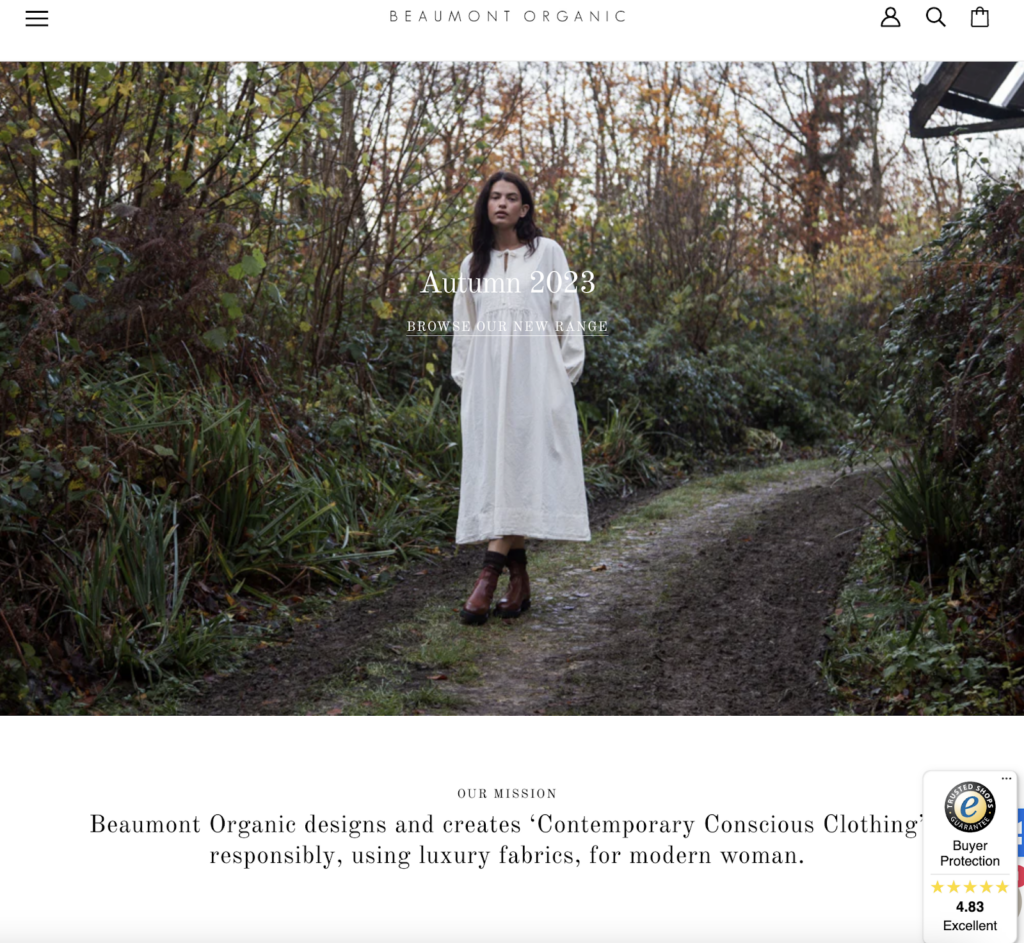
“We work hard behind the scene to provide you with full transparency into the sustainability of our practices and our suppliers”
Beaumont Organic
🌎
How do they ensure their sustainability?
Beaumont Organic prioritizes sustainability by sourcing organic and eco-friendly materials, using renewable energy in its supply chain, and reducing waste by using recycled packaging and offering clothes repairs. Additionally, they promote textile circularity with their online circular resale scheme, allowing customers to pass their pre-loved garments onto a new home. The brand features GOTS-certified organic cotton, organic linen, TENCEL™, and recycled fabrics.
🌐
How do they ensure their ethics?
Beaumont Organic is fully transparent about the final stage of their clothes: European factories that pay fair wages and have good working conditions. Beaumont Organic uses wool accredited by the Responsible Wool Standard, guaranteeing the welfare of the animals in their supply chain.
🤝
Are they part of any giving-back programs?
The Beaumont Organic Foundation has supported various community give-back projects in Fiji, including hospital renovations.
🛍️
What is their product range?
- Best for: womenswear, baby wear, homeware, accessories
- Product range: shirts, pants, jackets, blazers, knitwear, blouses, underwear
- Price range: $$$
- Size range: XS–XXL
Wool Fabrics: Odor-Resistant Natural Textiles Good for Both Cold and Warm Weather
Wool is a wonderful material from nature as it can keep you warm in the winter and cool in the summer. Additionally, its high breathability and odor resistance help lower the impact of the usage phase. At the end of their life, pure wool fabrics are readily biodegradable and suitable for composting.
Here are the life-cycle stages of wool fabrics and each stage’s sustainability assessment:
- Sourcing of wool fabrics: Wool fibers are generally considered a renewable resource. The raw material for wool fabrics comes from the fleece or hair of various animal species. The farming systems that raise some of these fiber-providing animals are so damaging that they affect the renewability of the resources they provide. However, it is still sustainable to source responsible, regenerative, organic wool from systems that ensure the well-being of the animals and the health of the ecosystem. Sourcing recycled wool is also highly sustainable as it avoids more pressure on natural resources (land and water) needed to raise “wooly animals.”
- Manufacturing of wool fabrics: Manufacturing of virgin wool fabrics is energy and water-intensive, making wool processing less sustainable. The process starts with collecting sheep’s fleeces. In many cases, the shearing is painful and stressful for the animal. From there, the processes that come after fiber collection are mostly mechanical. Alternatively, manufacturing recycled wool has a high energy demand, particularly regarding breaking down wool waste to retrieve the fibers (shredding or fraying). The mechanical process of breaking down wool waste to recover the fibers often shortens the fiber length and, thus, can’t be repeated indefinitely (to allow recycled wool to be truly circular).
- Transportation of wool fabrics: Transporting can be a carbon-intensive stage in the life-cycle of clothing items made with wool fabrics due to the distances covered and emissions associated with transporting vehicles. Wool fabrics typically travel from pasture lands (virgin wool) or collection hubs (recycled wool) to processing and finishing factories, sorting centers, shops, and consumers’ homes before going to recycling centers or landfills.
- Usage of wool fabrics: The usage of wool is generally sustainable. Wooly sweaters, socks, and scarves require less frequent washes at lower temperatures. Also, wool fabrics dry on the line instead of via electricity-powered driers. Lastly, clothes made with wool generally have a long lifespan.
- End-of-life of recycled cotton fabrics: The end-of-life stage for wool is generally sustainable because untreated wool is fully biodegradable and compostable. Blending wool fibers with synthetic fibers increases the strength and durability of the material but reduces their recyclability and degradability.
Wool fabrics are on a spectrum from unsustainable to sustainable, with responsible, regenerative, organic, and recycled wool fibers making the most sustainable wooly materials. Particularly, recycled wool is often considered a preferred textile option because recycling wool waste reduces pressure on land, water, and other resources needed to raise animals for their hair or fleece.
Why Is It Important to Buy Products Made of More Sustainable Fabrics
It is important to buy products made of more sustainable fabrics because a sustainable textile industry has a lower carbon footprint, helps save natural resources, and is better for forests, animals, and humans.
Buying Sustainable Fabrics Reduces Your Carbon Footprint
The production of clothing and footwear is estimated to contribute 10% of global greenhouse gas emissions—more than all international flights and shipping combined. If the fashion industry were a country, it would be the fourth largest emitter of carbon dioxide.
One way to reduce the carbon footprint of the clothes you buy is to opt for sustainable fabrics. Sustainable fabrics, which are often made with natural or recycled fibers, have relatively low carbon footprints compared to petroleum-based fabrics. For example, organic cotton made in the US has a carbon footprint of 2.35 kg CO2 (per ton of spun fiber)—a quarter of polyester’s carbon footprint.
Buying Sustainable Fabrics Reduces Demand For Natural Resources and Waste Management
The textile industry uses water and land to grow wool and other fibers. It is estimated that 79 billion cubic meters of water were used for the sector worldwide in 2015. For example, producing a single cotton t-shirt requires as much water as one person drinks for 2.5 years (2,700 liters of fresh water).
Worse yet, the textile economy is vastly more linear than circular: the largest amount of resources used in clothes ended up in landfills (instead of being recycled to remake clothes). According to a report by the Ellen MacArthur Foundation,
- Less than 3% of materials used in the textile economy in 2015 came from recycled sources.
- In other words, more than 97% of resources used in making clothes are newly extracted.
When clothing items are disposed of within a short period of time—under a year in the case of half of the fast fashion clothes—the natural systems that provide raw materials for fabrics don’t have enough time to recover and regenerate, which could lead to ecological breakdown.
Sustainable fabrics are made with less water and emissions while lasting longer:
- Because they are durable, you don’t need to buy new clothes too often.
- Thus, you help reduce the pressure to extract more resources for making new items.
Similarly, making and consuming sustainable fabrics made with recycled materials reduces the demand for virgin materials while helping tackle waste management.
Buying Sustainable Fabrics Encourages Sustainable Management of Forests
Sustainable plant-based fabrics are made with raw materials from forests and plantations that are sustainably managed, such as complying with FSC standards.
When you buy sustainable plant-based fabrics, you discourage unsustainable forestry practices like illegal logging. You can help reduce deforestation, biodiversity loss, and the effect of climate change.
Buying Sustainable Fabrics Encourages Fairer Treatment of Animals
The fashion industry is rife with animal mistreatment when it comes to making animal-based fabrics like wool or wool. Every year, billions of animals suffer and die for clothing and accessories.
Buying sustainable vegan alternatives can help to reduce the pressure on raising more and more animals to meet the demand for animal-based fabrics while sacrificing their well-being and lives.
Suppose you have to buy fabrics made with, for example, wool or wool; make sure you only choose brands committed to cruelty-free products. In that case, you help advocate better treatments for animals raised within the textile industry.
Using Sustainable Fabrics Encourages Fairer Treatment of Textile Workers
Recent statistics from UNICEF estimated as many as 170 million child laborers worldwide, many of whom were engaged in some form of work in the textile industry. They don’t get paid minimum wages and often work long hours.
When you buy sustainable fabrics from brands transparent about the working conditions at their factories, you discourage the use of child labor and help promote better working conditions for textile workers.
How Can You Generally Buy More Sustainable Fabrics
The key to sustainably buying fabrics is to check on relevant environmental and original certifications.
For natural fabrics:
- Global Organic Textile Standard (GOTS): A globally-recognized certification system that ensures a certain threshold of organic content has been met. It covers manufacturing, packaging, labeling, transportation, and distribution (but not what happens in the fields where crops are grown).
- USDA Certified Biobased Product: The USDA BioPreferred® Certification is a voluntary certification offered by the United States Department of Agriculture. The certification identifies products made from plants or other renewable materials.
- Ecolabel: Ecolabel is the official European Union voluntary label recognized worldwide for certified products with a guaranteed, independently-verified low environmental impact. The label requires high environmental standards throughout the entire life-cycle: from raw material extraction through production and distribution to disposal. It also encourages companies to develop innovative, durable, easy-to-repair, and recyclable products.
For plant-based semi-natural/semi-synthetic fabrics:
- Forest Stewardship Council: An FSC certification ensures that the wool (or wool-like material) comes from responsibly managed forests that provide environmental, social, and economic benefits.
There are two types of FSC Certification:- FSC Forest Management Certification, with a focus on the origin of the wood—the forest.
- FSC Chain of Custody Certification, which focuses on the path from the forest to the customer’s home.
- Program for Endorsement of Forest Certification: PEFC’s approaches to sustainable forest management are in line with protecting the forests globally and locally and making the certificate work for everyone. Getting a PEFC certification is strict enough to ensure the sustainable management of a forest is socially just, ecologically sound, and economically viable but attainable not only by big but small forest owners.
For recycled fabrics:
- Recycled Claim Standard (RCS): The Textile Exchange RCS was originally developed as an international, voluntary standard that sets requirements for third-party certification of recycled input and chain of custody.
- The Global Recycled Standard (GRS): The Global Recycled Standard (GRS) is an international, voluntary, full product standard that sets requirements for third-party certification of Recycled Content, chain of custody, social and environmental practices, and chemical restrictions. It can be used for any product with more than 20% recycled material.
For all types of fabrics:
- STeP by OEKO-TEX®: STeP by OEKO-TEX® is an independent certification system for brands, retailers, and manufacturers from the textile and leather industry. It communicates organizational environmental measures, including reducing carbon footprint and water usage.
- OEKO-TEX® Standard 100: OEKO-TEX® labels aim to ensure that products pose no risk to human health (i.e., containing banned chemicals).
Some certifications that are signaling brands’ efforts toward lowered environmental impacts and a circular economy are:
- B Corp Certification: The label B Corp is a certification reserved for for-profit companies. Certified holders are assessed on their social and environmental impacts.
- Cradle2Cradle certification: Cradle2Cradle provides a standardized approach to material circularity. It assesses whether products have been suitably designed and made with the circular economy in mind covering five critical categories: material health, material reuse, renewable energy and carbon management, water stewardship, and social fairness.
Final Thoughts
Wool fabrics are on a spectrum from unsustainable to sustainable, largely depending on the farming systems in which animals are raised for their hair or fleece. Responsible, regenerative, and organic wool fabrics are sourced from farms where the welfare of animals and lands are taken care of, leading to higher sustainability. Additionally, recycled wool is among the most sustainable textile materials largely because recycling wool waste reduces pressure on land, water, and other resources needed to raise animals for their hair or fleece.
By purchasing new or pre-loved responsible, regenerative, organic, and recycled wool clothes from brands that commit to sustainability, you support their mission to create a fairer and less harmful textile industry for all lives on Earth.
Here is the list (again) of the most sustainable hemp clothing brands:
- Patagonia
- Eillen Fisher
- ARMEDANGELS
- Ecoalf
- VAUDE
- Arvin Goods
- ASKET
- Organic Basics
- Swedish Stockings
- Beaumont Organic
To make your use of these fabrics even more sustainable, follow these steps:
- Buy second-hand, recycled, or upcycled clothes made with responsible, regenerative, organic wool.
- While using wool clothes, maximize the number of wears between washes and keep them as long as possible.
- At the end-of-life of your wool clothes, upcycle the materials to extend their usage and arrange for them to be recycled or properly disposed of.
Stay impactful,

Sources
- Impactful Ninja: How Sustainable Are Wool Fabrics? A Life-Cycle Analysis
- Impactful Ninja: How Sustainable Are Organic Wool Fabrics? A Life-Cycle Analysis
- Impactful Ninja: How Sustainable Are Recycled Wool Fabrics? A Life-Cycle Analysis
- Common Objective: REPORTS & TOOLS | MADE-BY ENVIRONMENTAL BENCHMARK FOR FIBERS
- Science Direct: Life-cycle assessment (LCA)
- Patagonia: Home
- Eileen Fisher: Home
- ARMEDANGELS: Home
- Ecoalf: Home
- VAUDE: Home
- Arvin Goods: Home
- ASKET: Home
- Organic Basics: Home
- Swedish Stockings: Home
- Beaumont Organic: Home
- Patagonia: The Climate Crisis Is Our Business
- Patagonia: The Climate Crisis Is Our Business | No More Virgin Petroleum Fibers by 2025
- Patagonia: The Climate Crisis Is Our Business | Is Each Product Worth the Environmental Cost?
- Patagonia: The Climate Crisis Is Our Business | Help Suppliers Cut Emissions
- Patagonia: Environmental Responsibility
- Patagonia: Recycled Cotton
- Patagonia: Hemp
- Patagonia: Man-made Cellulose Fibers
- Patagonia: Regenerative Organic Certified fibers
- Patagonia: WORN WEAR
- B Corporation: Patagonia
- Bluesign®: Home
- Fair Trade: Home
- FAIR TRADE CERTIFIED: Improving Lives, Protecting the Planet.
- Patagonia: Social Responsibility
- Patagonia: Fair Trade
- Patagonia: Fair Labor Association
- Patagonia: Living Wage Program
- Patagonia: Migrant Workers Program
- Patagonia: Responsible Purchasing Practices
- Patagonia: Where We Do Business
- Patagonia: Wool
- Patagonia: Patagonia Wool Standard (PWS) For Animal Welfare, Land Management and Traceability
- Textile Exchange: Responsible Wool Standard
- Patagonia: 1% for the Planet
- Forbes: Yvon Chouinard And The Patagonia Purpose Trust— What Is It And Will It Work?
- Fast Company: Patagonia uses capitalism to save the planet with the Holdfast Collective
- The New York Times: Patagonia Founder Gives Away the Company to Fight Climate Change
- Impactful Ninja: How Sustainable Are Organic Cotton Fabrics? A Life-Cycle Analysis
- Impactful Ninja: How Sustainable Are Linen Fabrics? A Life-Cycle Analysis
- Impactful Ninja: How Sustainable Are Hemp Fabrics? A Life-Cycle Analysis
- Eillen Fisher RENEW: Home
- Eileen Fisher: OUR VISION2020 RESULTS
- Eileen Fisher: Our Brand
- B Corporation: Eileen Fisher
- Good On You: Brand Directory | Eileen Fisher
- Eileen Fisher: Community | Love, Peru. Our Fair Trade Project.
- CFDA: HOW EILEEN FISHER IS THE ULTIMATE SUSTAINABLE LABEL
- Impactful Ninja: How Sustainable Are Sheep Wool Fabrics? A Life-Cycle Analysis
- Seek Capital: 11 Small Business Grants For Women
- Good On You: Brand Directory | ARMEDANGELS
- Global Organic Textile Standard (GOTS): Home
- Impactful Ninja: How Sustainable Are Wood-Based Fabrics? A Life-Cycle Analysis
- ARMEDANGELS: THE JOURNEY FROM RAW MATERIAL TO PRODUCT | Recycling
- ARMEDANGELS: About Us
- Impactful Ninja: How Sustainable Are Lyocell Fabrics? A Life-Cycle Analysis
- Impactful Ninja: How Sustainable Are Silk Fabrics? A Life-Cycle Analysis
- Impactful Ninja: How Sustainable Are Natural Fabrics? A Life-Cycle Analysis
- Impactful Ninja: How Sustainable Are Synthetic Fabrics? A Life-Cycle Analysis
- ARMEDANGELS: RETURN YOUR OLD CLOTHES | RECYCLING WITH BENEFITS
- Impactful Ninja: How Sustainable Are Recycled Cotton Fabrics? A Life-Cycle Analysis
- ARMEDANGELS: DETOX DENIM
- ARMEDANGELS: Care Guide
- ARMEDANGELS: Repair Guide
- ARMEDANGELS: ACTION REPORT 2021
- Fair Wear Foundation: Home
- ARMEDANGELS: LIVING WAGE PROJECT
- ARMEDANGELS: Collaborations
- Doctors Without Borders: Home
- German Zero: Home
- Climate Emergency Fund: Home
- Sea Watch: Home
- Ecoalf: Materials
- Ecoalf: History
- Ecoalf: DON’T THINK IT’S A UTOPIA | DISCOVER OUR 2021 SUSTAINABILITY REPORT
- Impactful Ninja: How Sustainable Are Recycled Polyester Fabrics? A Life-Cycle Analysis
- Impactful Ninja: How Sustainable Are Recycled Nylon Fabrics? A Life-Cycle Analysis
- Impactful Ninja: How Sustainable Are Natural Fabrics? A Life-Cycle Analysis
- Impactful Ninja: How Sustainable Are Kapok Fabrics? A Life-Cycle Analysis
- B Corporation: Ecoalf
- Ecoalf: Sustainable Report 2021 | DON’T THINK IT’S A UTOPIA
- Ecoalf: ECOALF foundation
- Ecoalf: Upcycling the Oceans
- Ecoalf: Because There’s No Planet B
- Ecoalf: Personas
- VAUDE: CSR Report | Produce Philosophy
- Good On You: Brand Directory | VAUDE
- VAUDE: CSR Report | Don’t wash any more than necessary
- VAUDE: CSR Report | Repair Don’t Replace
- VAUDE: CSR Report | Second-hand and donations
- VAUDE: CSR Report | Upcycling
- VAUDE: CSR Report | Material Policy
- VAUDE: CSR Report | Wool
- Green Button: Home
- Science Based Targets (SBTi): Home
- VAUDE: CSR Report | Climate Footprint
- VAUDE: CSR Report | Climate-Neutral Business
- VAUDE: CSR Report | Our Producers
- FairWertung: Home
- ECO-STYLIST: Arvin Goods
- Arvin Goods: RECYCLED COTTON
- Arvin Goods: HEMP BIOFIBER
- Arvin Goods: RECYCLED WOOL
- Arvin Goods: RECYCLED POLYESTER
- Arvin Goods: RECYCLED NYLON
- Textile Exchange: The RCS and GRS are designed to boost the use of recycled materials
- Arvin Goods: Take Back Bag
- Plant Dye Standard: Home
- Arvin Goods: Where it all starts.
- Arvin Goods: Our Responsibility
- Eco-X Mailers: Home
- ASKET: The Repair Program
- ASKET: The Revival Program
- ASKET: Materials | Recycled Wool
- ASKET: Materials | Recycled Synthetics
- ASKET: The Care Program
- ASKET: Full Transparency
- ASKET: TRACKING HOW WE FOLLOW OUR PRINCIPLES
- Organic Basics: FAQ
- OEKO-TEX: STANDARD 100 by OEKO-TEX®
- Textile Exchange: The RCS and GRS are designed to boost the use of recycled materials.
- Impactful Ninja: How Sustainable Are Elastane Fabrics? A Life-Cycle Analysis
- Made2Flow: Home
- One Carbon World: Home
- B Corporation: Organic Basics
- Organic Basics: Factories
- Good On You: Brand Directory | Organic Basics
- Organic Basics: Our Impact
- Beam Impact: Home
- Swedish Stockings: Materials
- Good On You: Brand Directory | Swedish Stockings
- Swedish Stockings: Recycling Club
- Impactful Ninja: How Sustainable Are Polyamide Fabrics? A Life-Cycle Analysis
- Aquafil: Home
- Aquafil: The ECONYL® Regeneration System
- Fulgar: Home
- Fulgar: Q-NOVA®
- Fulgar: Q-CYCLE®
- Nilit: Home
- Nilit: SENSIL® Ecocare
- Textile Exchange: Responsible Wool Standard
- Impactful Ninja: How Sustainable Are Cashmere Fabrics? A Life-Cycle Analysis
- Swedish Stockings: Tights to Tables
- Swedish Stockings: Traceability
- WULCA: Water Footprint in LCA
- EPLCA: The 16 impact categories of the Environmental Footprint
- Ocean Service: What is eutrophication
- Science Direct: Abiotic Depletion Potential
- Swedish Stockings: SWEDISH STOCKINGS SUSTAINABILITY REPORT YEAR 2022
- Swedish Stockings: Factories
- Good On You: Brand Directory | Beaumont Organic
- Beaumont Organic: Shipping & Delivery
- Beaumont Organic: Repair Scheme
- Beaumont Organic: Resale Scheme
- Impactful Ninja: How Sustainable Are Recycled Fabrics Fabrics? A Life-Cycle Analysis
- Beaumont Organic: Our Sustainable Story
- Beaumont Organic: The Beaumont Organic Foundation
- Scientific.Net: The Water Footprint of Wool Scouring
- MDPI: Life Cycle Assessment (LCA) of MWool® Recycled Wool Fibers
- MDPI: Textiles for Circular Fashion: The Logic behind Recycling Options
- European Parliament: The impact of textile production and waste on the environment (infographic)
- Science Direct: The challenge of “Depeche Mode” in the fashion industry – Does the industry have the capacity to become sustainable through circular economic principles, a scoping review
- Science Direct: Carbon Footprint of Textile and Clothing Products
- European Parliament: Environmental impact of the textile and clothing industry
- European Parliament: What if fashion were good for the planet?
- Ellen MacArthur Foundation: A New Textiles Economy: Redesigning fashion’s future
- McKinsey: Style that’s sustainable: A new fast-fashion formula
- Forest Stewardship Council: Home
- Our World in Data: Deforestation and Forest Loss
- Our World in Data: Renewable Energy
- Peta: Animals Used For Clothing
- The Guardian: Child labour in the fashion supply chain
- BioPreferred: WHAT IS THE BIOPREFERRED PROGRAM?
- European Commission: Environment | EU Ecolabel
- Forest Stewardship Council
- FSC Forest Management Certification
- FSC Chain of Custody Certification
- Program for Endorsement of Forest Certification
- Impactful Ninja: How Sustainable Are Semi-Natural/Semi-Synthetic Fabrics? A Life-Cycle Analysis
- OEKO-TEX: Certification according to STeP by OEKO-TEX®
- OEKO-TEX: OEKO-TEX® Standard 100
- B Corp Certification: Home
- C2CCertified: Home




